Astrotidbits-blog - Astrotidbits.info
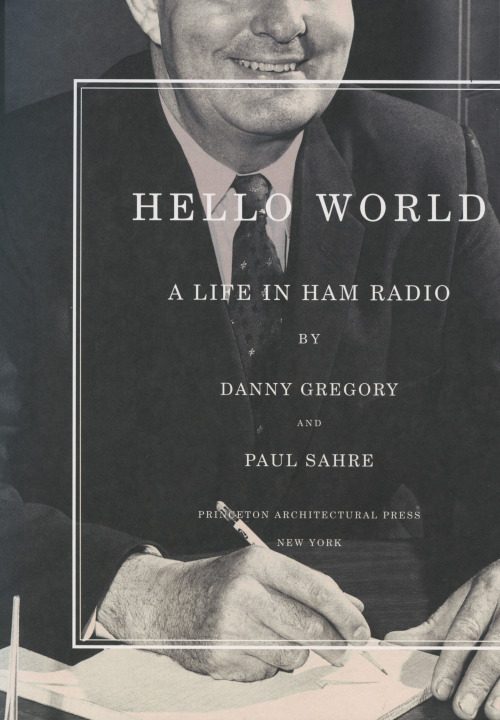
More Posts from Astrotidbits-blog and Others

Jupiter’s swirling clouds around the Great Red Spot. NASA/JPL.
My Radio-inActive Life
I am a non-practicing amateur radio operator. K4EYO is my callsign. I have a General Class license, but I got that after the FCC did away with the Morse code requirement, so to some people that doesn’t really count.
There is still the Extra class license out there, my one last goal, the pinnacle, the zenith of the U.S. Amateur radio licensing system. I’m putting that off, because once I pass that test, well, what’s left? I already have the Holy Grail of licenses, which is the General Radiotelephone Operator’s License (GROL). But that’s for working on radio equipment on ships in the Great Lakes and in the oceans, and also for supervising avionics techs, or something like that. In other words, very non-amateur. It’s a lifetime license, so I don’t have to deal with renewing it, which is the coolest thing about it, to me.
Ancient History
When I was a kid, way back in the 60’s my best friend’s dad was a Ham (that’s what we call ourselves in Amateur Radio-Land) and he tried to teach a bunch of us kids Morse code via LPs. We sat in the basement and wrote down what we heard, or what we thought we heard. I hated it. But he had a great ham shack (equipment room) with lots of postcards (QSL cards) from his radio contacts all over the world. Cool. He also took us to the local radio club meetings in nearby Hazel Park, MI. All I remember from that was all of the cigar smoke and the swap meet equipment - old Hallicrafters and Heathkits. These were the computer geeks before there were computers.
And that was it for my radio experience. We moved to Atlanta and my attention was refocused on not being beat up by the various gangs at my new high school and pretending to like Elvis.
Not So Ancient History
Years later (1990-ish) I wound up going to a technical school in the mountains of North Georgia, which is a story for another day. But there I could pick from auto mechanics, brick-laying (yep!), practical nursing, electrical wiring, and electronic technology. They used to have watchmaking(!), which is what I would have taken, but instead I settled for the electronics program.
We had a couple of old guys who taught us all about analog circuits, tubes (we had a room full of tubes - must be worth a fortune now), and antennas. I loved this stuff.
We also had a younger guy who taught us about digital circuits, PLCs, assembly language, and who asked me at one point what the hell I was doing there, and not in a university somewhere.
I owe him a debt of gratitude for encouraging me.
It was here that I got my Technician class license and my GROL (first person in something like 15 years from the school). We re-established the dormant radio club at the school, which had three or four members. We’d go to hamfests (conventions for radio geeks), and talk to each other on 2 meter radios in our respective cars. We strung antennas up on the roof of the classroom. We also tried to communicate with MIR as it made its passes overhead, along with the other thousands along the east coast. Remember MIR? From Wikipedia, ca 1993:
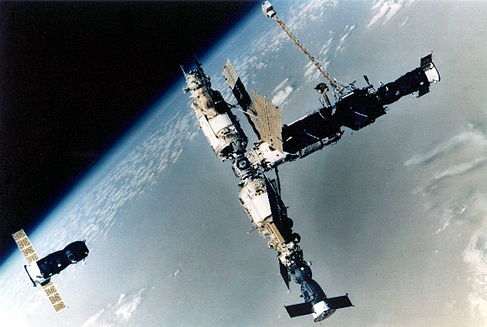
One guy had an HF setup at home. I just had a mobile 2m radio in my VW Bug, and a 2m handheld radio that stayed on my hip, as I played geek wannabe.
A Slight Divergence- typewriters
We moved back to Atlanta and my new skills got me a job repairing typewriters (actually, the auto mechanic track would have been more useful). This was a very cool job, but the pay was terrible. But I learned how to repair/adjust IBM Selectrics via sets of slides in Carousel trays, and older mechanical machines like Smith Coronas, Remingtons, Olivettis just by figuring them out. I keep thinking this is what I’d do if I started my own business. But then I come to my senses.
White Collar Work
Then I got into call center work, first answering phones, then managing, then building them as a project manager. This was the period where I’ve earned the most money so far.
The problem with project management is that by definition, projects are temporary. And so are project manager jobs. At this time there was also a huge movement to move call centers to India, and I didn’t like the thought of that commute.
Blue Collar Work
After being unemployed for 7 months I went to a Georgia Department of Labor job fair in 2001, where the local transit authority (MARTA) had a recruiter looking for radio techs. I was the only one there who had radio licenses and education (the line for computer maintenance/IT jobs was a mile long). 2 months later I had a job and became underemployed.
So now I was in a real radio shop! I could talk about radios, bring in my equipment to adjust and tune…
Nope. Only one had a ham license, the old-timer. The rest of them couldn’t care less about radios. And to add injury to insult, we were not allowed to work on our own stuff, even off the clock.
But I did get great training on 800 mhz trunking systems. And it got me motivated to go to college to get a degree in Economics (“you won’t get rich studying economics, but at least you’ll know why”, as the old joke goes.)
Back to White Collars
It was a few months after graduation that I got a new job at MARTA, as a Maintenance Planner for the computer maintenance group. 7 years later and I’m still doing that. Still not getting rich.
Urban Radios
This is when I upgraded my license to “General” and started putting together a radio setup. But we live in a high-rise, so antennas are more of a challenge. And to keep from singeing the fur on the cats, I had to look at low power (QRP) systems. I have always preferred these anyway, just to be an iconoclast amongst the iconoclasts.
For decades the radio magazines touted home-built (or store bought) 1000 watt or more systems. Just blast that signal out there, power bills & other people’s TV reception be damned! Not really, RFI is bad.
QRP systems appeal to me just like bicycles and economics appeal to me: Efficient use of resources.
So I’ve built assembled a little 40 meter radio, and built assembled an iambic paddle and have built assembled a meter in an altoids can. Now I just need to revisit my old nemesis, Morse code.
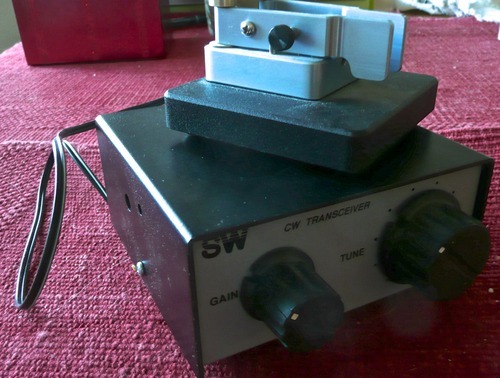
See, these low powered, efficient systems are that way because they don’t transmit voice. No fat sidebands. But they only use 3 watts instead of 100 or 1,000.
So I need to string up some wire, or build some exotic coil loaded beast to transmit from the living room, which could double as a scratching post for the cats. And then we’ll be in business.
Now
And six years later nothing has changed, except for the thick layer of dust on my stuff. I really should wire it all up and at least listen to chatter out there.
But I also need to make a shirt, finish the kitchen cabinets, build a workbench…
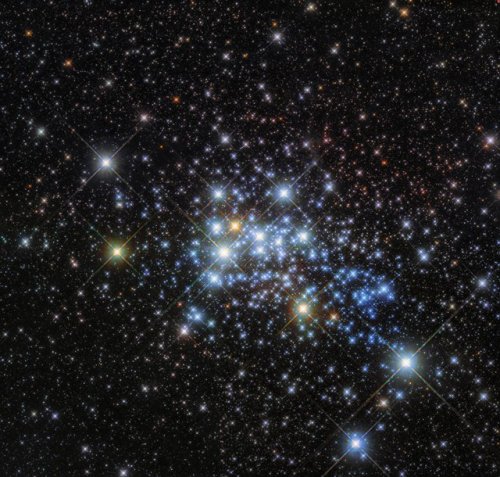
Hubble Hones In on a Hypergiants Home : The super star cluster Westerlund 1, only 15,000 light-years away in our Milky Way neighborhood, hosts one of the largest stars ever discovered.
js
Come check us out for all your astronomy needs!!!
www.astrotidbits.com

A once in a lifetime event visible every 75-76 years, Halleys comet returned in 1986. Halley is the only short-period comet that is clearly visible to the naked eye from Earth. It has been documented since 240 BC.

ASTRONOMERS CAPTURE BEST VIEW EVER OF DISINTEGRATING COMET
Astronomers have captured the sharpest, most detailed observations of a comet breaking apart 67 million miles from Earth, using NASA’s Hubble Space Telescope. The discovery is published online today in Astrophysical Journal Letters [http://apjl.aas.org].
In a series of images taken over three days in January 2016, Hubble showed 25 fragments consisting of a mixture of ice and dust that are drifting away from the comet at a pace equivalent to the walking speed of an adult, said David Jewitt, a professor in the UCLA departments of Earth, Planetary and Space Sciences; and Physics and Astronomy, who led the research team.
The images suggest that the roughly 4.5-billion-year-old comet, named 332P/Ikeya-Murakami, or Comet 332P, may be spinning so fast that material is ejected from its surface. The resulting debris is now scattered along a 3,000-mile-long trail, larger than the width of the continental United States.
These observations provide insight into the volatile behavior of comets as they approach the Sun and begin to vaporize, unleashing powerful forces.
“We know that comets sometimes disintegrate, but we don’t know much about why or how,” Jewitt said. “The trouble is that it happens quickly and without warning, so we don’t have much chance to get useful data. With Hubble’s fantastic resolution, not only do we see really tiny, faint bits of the comet, but we can watch them change from day to day. That has allowed us to make the best measurements ever obtained on such an object.”
The three-day observations show that the comet shards brighten and dim as icy patches on their surfaces rotate into and out of sunlight. Their shapes change, too, as they break apart. The icy relics comprise about four percent of the parent comet and range in size from roughly 65 feet wide to 200 feet wide. They are separating at only a few miles per hour as they orbit the Sun at more than 50,000 miles per hour.
The Hubble images show that the parent comet changes brightness frequently, completing a rotation every two to four hours. A visitor to the comet would see the Sun rise and set in as little as an hour, Jewitt said.
The comet is much smaller than astronomers thought, measuring only 1,600 feet across, about the length of five football fields.
Comet 332P was discovered in November 2010, after it surged in brightness and was spotted by two Japanese amateur astronomers.
Based on the Hubble data, the research team suggests that sunlight heated the surface of the comet, causing it to expel jets of dust and gas. Because the nucleus is so small, these jets act like rocket engines, spinning up the comet’s rotation, Jewitt said. The faster spin rate loosened chunks of material, which are drifting off into space. The research team calculated that the comet probably shed material over a period of months, between October and December 2015.
Jewitt suggests that some of the ejected pieces have themselves fallen to bits in a kind of cascading fragmentation. “We think these little guys have a short lifetime,” he said.
Hubble’s sharp vision also spied a chunk of material close to the comet, which may be the first salvo of another outburst. The remnant from still another flare-up, which may have occurred in 2012, is also visible. The fragment may be as large as Comet 332P, suggesting the comet split in two. But the remnant wasn’t spotted until Dec. 31, 2015, by a telescope in Hawaii.
That discovery prompted Jewitt and colleagues to request Hubble Space Telescope time to study the comet in detail.
“In the past, astronomers thought that comets die when they are warmed by sunlight, causing their ices to simply vaporize away,” Jewitt said. “But it’s starting to look like fragmentation may be more important. In comet 332P we may be seeing a comet fragmenting itself into oblivion.”
The researchers estimate that comet 332P contains enough mass for 25 more outbursts. “If the comet has an episode every six years, the equivalent of one orbit around the Sun, then it will be gone in 150 years,” Jewitt said. “It’s just the blink of an eye, astronomically speaking. The trip to the inner solar system has doomed it.”
The icy visitor hails from the Kuiper belt, a vast swarm of objects at the outskirts of our solar system. As the comet traveled across the system, it was deflected by the planets, like a ball bouncing around in a pinball machine, until Jupiter’s gravity set its current orbit, Jewitt said.
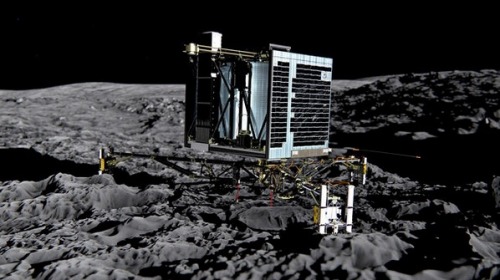

Comet lander Philae wakes up: How it happened and what’s next
By Lauren Raab
Philae, the first spacecraft to land on a comet, surprised and delighted scientists this weekend by waking up and reestablishing contact with Earth, seven months after running out of power. It “spoke” for more than a minute, according to the European Space Agency, and it’s expected to be able to continue gathering information and sending it home.
Here’s a look at what the lander has done so far and what will happen next.
Continue Reading.
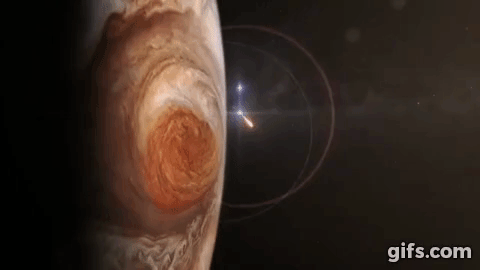
Infrared Jupiter looks hot as Juno spacecraft approaches
NASA’s mission to explore the Jovian system has almost reached its destination, and telescopes on Earth are capturing some especially fiery images of the planet to help.
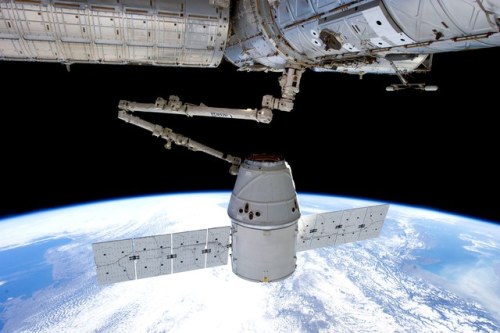
Spacex CRS-10
Titan Touchdown
On Jan. 14, 2005, ESA’s Huygens probe made its descent to the surface of Saturn’s hazy moon, Titan. Carried to Saturn by NASA’s Cassini spacecraft, Huygens made the most distant landing ever on another world, and the only landing on a body in the outer solar system. This video uses actual images taken by the probe during its two-and-a-half hour fall under its parachutes.
-
 albad liked this · 7 months ago
albad liked this · 7 months ago -
 aka-seppi reblogged this · 6 years ago
aka-seppi reblogged this · 6 years ago -
 wyoty liked this · 7 years ago
wyoty liked this · 7 years ago -
 astrotidbits-blog reblogged this · 7 years ago
astrotidbits-blog reblogged this · 7 years ago -
 astrotidbits-blog liked this · 7 years ago
astrotidbits-blog liked this · 7 years ago -
 lifeisfanny liked this · 8 years ago
lifeisfanny liked this · 8 years ago -
 brandef reblogged this · 9 years ago
brandef reblogged this · 9 years ago -
 paulsahrecollection reblogged this · 10 years ago
paulsahrecollection reblogged this · 10 years ago -
 detroitja liked this · 12 years ago
detroitja liked this · 12 years ago -
 w8bhz liked this · 12 years ago
w8bhz liked this · 12 years ago -
 w8bhz reblogged this · 12 years ago
w8bhz reblogged this · 12 years ago -
 speedmaster liked this · 12 years ago
speedmaster liked this · 12 years ago -
 jessysmith reblogged this · 12 years ago
jessysmith reblogged this · 12 years ago